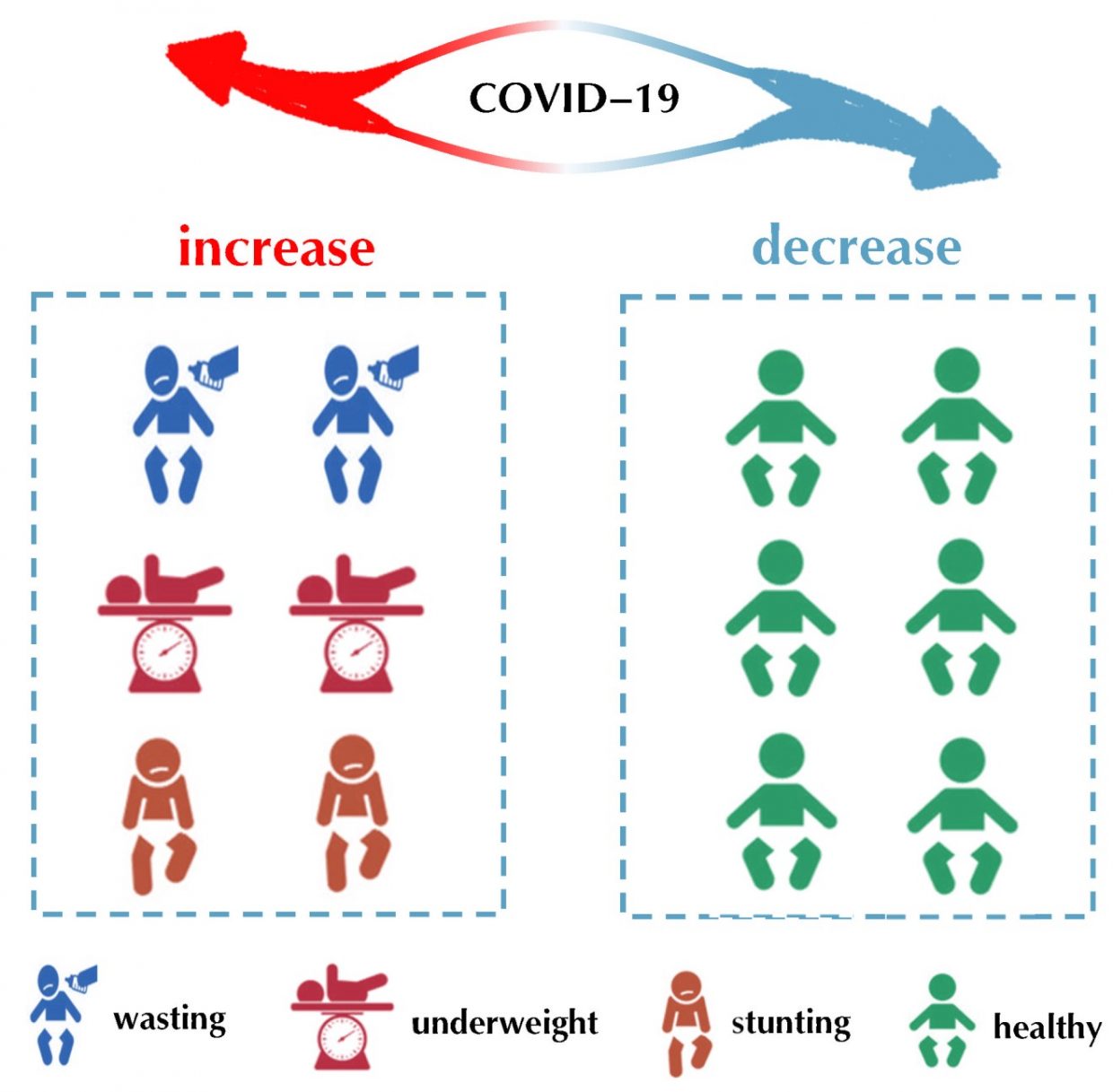A crisis within crisis! The existing burden of child under nutrition to be exacerbated by COVID-19-pandemic. How to react?
Public Health Nutrition Editorial Highlight: The risk to child nutrition during and after COVID-19 pandemic: what to expect and how to respond.
The current COVID-19 pandemic threatens the nutritional status and survival of children under five in low- and middle-income countries. Governments around the world have implemented preventive measures to limit the spread of COVID-19, including school closures, travel restrictions, and community lockdowns, all of which have affected children’s nutritional status and their family circle.
Even before COVID-19, the global incidence of stunting (low height for age), wasting (low weight for length), and underweight (low weight for age) were growing at an unacceptable rate in low- and middle-income countries, where stunting alone affects an estimated 21.3% or 144 million children under the age of five, and wasting continues to threaten the lives of an estimated 6.9% or 47 million children under the age of five around the world. Africa and Asia suffer the most from child undernutrition, accounting for 55% and 39% of global cases of child undernutrition, respectively.
Furthermore, a child suffering from any form of undernutrition, especially stunting, in the first 1000 days of life is vulnerable to health problems such as mental problems, resulting in poor cognitive development, and this damage is irreversible, stunted children are observed to perform poorly at school and in the workplace, which can affect the country’s gross domestic product and reduce the prosperity of future generations.
The World Health Organization (WHO) stated that in previous pandemics health care services were shifted to respond to emergencies and have struggled to maintain routine services. This often leads to neglect of basic and regular basic health care services, including child nutrition, family planning, and supplements for those in need, affecting the nutrition status of both mother and child.
It is estimated that a modest decrease in maternal and child health care with a hypothetical decrease in coverage of 15-45% over six months would result in a 10-45% increase in deaths of children under five each month. A 10% increase in child wasting within six months would lead to more child deaths, with an expected increase of 253,500 deaths.
It is time to act; otherwise, the consequences of COVID-19 on child nutrition will be felt across generations. That being said, this study suggests strategic responses to reduce child undernutrition. These efforts include improving access to community nutrition services that support the early detection and treatment of malnourished children and the distribution of food including foods fortified with vitamins and minerals, to vulnerable households, especially those with children under five. Moreover, counseling and promotion programs should be strengthened to revitalize community nutrition education in areas such as pregnancy, exclusive breastfeeding, complementary feeding, and hygienic practices such as hand washing, proper sanitation, and other basic behavioral changes.
In conclusion, the COVID-19 pandemic has affected many countries, especially countries where the burden of child malnutrition is worsening. However, undernutrition is a preventable and treatable disease and can be eliminated through a strategic multisectoral strategy. Governments, donors, and independent health agencies should take a holistic approach to protect the health and nutrition of vulnerable children.

Access the full article here ‘The risk to child nutrition during and after COVID-19 pandemic: what to expect and how to respond’.
Click here to view all Editorial Highlights from Public Health Nutrition




It’s a very good study ,we should indeed stand up and fight for the future generations through your key highlighted measures.keep it up James and your mate.